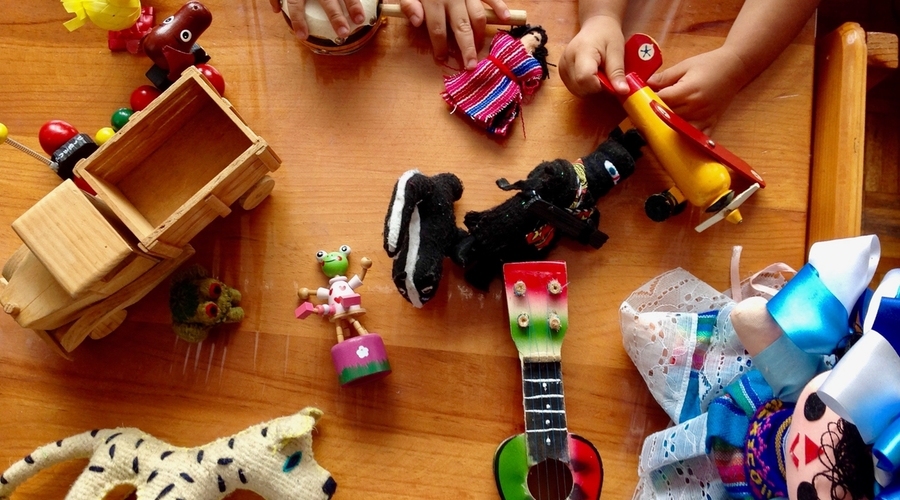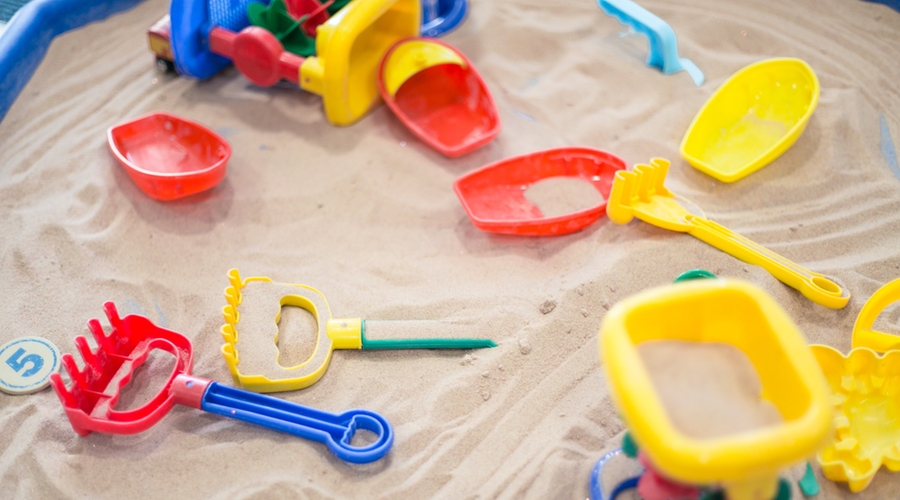settings
children
With Famly since
Adaptations to the setting
When you’re looking at the physical aspects of your setting, the aim should be to modify the environment, to make the transition from A to B easy for as many children as possible. As children with physical SEN may need a walker or a wheelchair, it is vital that they can get around with as little effort as possible. A suitable physical setting is key for any successfully inclusive practice.
Although these guidelines may seem obvious, it’s easy to overlook them when you have 101 children tearing around and a hectic day-to-day schedule to think about!

- Organise your furniture and equipment in a way that leaves a wide aisle for children to get through.
- There should be a ramp as well as steps or stairs to ensure all children can enjoy the outdoor environment.
- Children will learn best when they are comfortable. Find out (from the child’s SENCO or parents) what position the child finds most comfortable, and then make sure this is an option for the child when they’re taking part in the activities.
- A key component of any inclusive practice is that you ensure that all equipment is made steady. Choose either heavy weighted items that can’t be knocked over or secure loose items to the table or floor.
- Well-lit rooms are much easier for children with sight problems to navigate around. Make sure to have as much natural light coming into the rooms as possible.
- Make use of sound-making objects like a chime or bell in the different rooms in your setting. These sounds will help children who struggle with their sight to get to know their surroundings. As we mentioned in a previous article these sounds could also be used to signal the start or end of an activity too.
- Although the reorganisation of a room can be a nice change from time to time, try to avoid doing this too often. SEN Children, in particular, need to familiarise themselves with your environment before they can really engage and enjoy learning.
- Whether you’re doing an activity in the classroom or outside, make sure there is a ‘safe place’ for the children to calm down. Children with SEN that get anxious or restless can be taken here by their SENCO to allow them to settle again.

Adaptations to the teaching methods
Of course, preparing your nursery with inclusive practice in mind is not just about the physical setting. We all know that the key to having a great nursery is having great people working within in it. Early years practitioners play such a vital role in educating and supporting the learning and development in children’s crucial first years.
Every child is different and will require different amounts of care and attention. Preschool teaching is about fulfilling children’s needs, helping them to learn to venture out of their comfort zone in becoming more independent and teaching them the basic skills of life. For a successful inclusive practice, teaching methods are vital to consider.
Below are some ideas that practitioners can think about when it comes to the way in which they teach their children.
1. Choice
Giving every child a choice of activity is crucial for children with SEN, to make sure that they’re not partaking in something that they don’t want to. By showing the child one activity and then another, you can see which they are more drawn towards.
On the other end of the scale, too much choice could be a stressor for these children and this is where understanding every child as an individual is so crucial. The more you get to know the child, the more educated your planned teaching will be.

2. Varying teaching styles
You need to make sure that your practitioners understand the importance of using lots of different ways to communicate with the children. As adults, communication comes in a variety of gestures, noises, and facial expressions, as well as words, and utilising all of these modes of communication is essential for a more inclusive practice.
Practising communication is so valuable in helping the children become comfortable and confident so you need to give plenty of opportunities for them to communicate throughout the day.
3. Planning
Different children will have different needs and proper planning allows you to cater for lots of different children in the same activity.
Be mindful of not becoming too focused on a child’s disability. Focus on the child’s strengths, and plan activities that build on these to improve their confidence too.
4. Transitioning
When transitioning from and to different activities or rooms, make sure children are given a warning that what they’re doing is going to change. This forewarning will give them time to finish up in their own time and reduce the stress that can come with changing activities.

5. Between time
Plan carefully to make sure there’s always something to do in between activities. Even with the best planning, sometimes children will have to wait before they’re ready to go ahead with the next activity. As we know, all children can find this hard and patience isn’t something any young children normally possess in great quantities.
For children with SEN, waiting can be extra difficult, which is why you should make sure the next activity is set up before you warn the children about a change.
6. Shared opportunities and cooperative learning
Something that you should always be focusing on is teaching classmates how to help a child with a disability. Normally developing children may be unsure how to communicate with children who have SEN, but inclusive practice is something that all children can benefit from.
Provide opportunities for SEN children to play near another child doing the same, or similar, activity. The child with SEN may learn how to do something from the other child, or vice versa!
7. Everyday opportunities
Not all learning takes place during the activities and tasks that have been pre-planned. That’s why you need to take advantage of everyday opportunities and resources found in your immediate environment to contribute to your inclusive practice.
Take lunchtime, for example. You can ask children to match the colour of their cup and plate/bowl for lunch. You could also try asking children to hang their coat on the peg with their name on it, or getting children to help prepare for snack time. Peeling fruits, for example, is fantastic for children’s fine motor skills, concentration, and of course their practical life skills.

8. Labelling
Label as much as you can in large clear letters, photographs, or even braille. This will help your children learn the names of items or objects in the setting, giving them a headstart with their early years literacy.
9. Repetition
We all know that practice makes perfect. For young children, repetition forms the basis for learning, skill development, and eventually accomplishment. For children with SEN, more practice may be needed to master a new skill.
As a way to make learning more effective, you should try to include the child’s preferences in your activity planning. Let’s take a child who has shown a liking for playing with animals. You should make sure that you build upon that and repeat the topic in future activities. You could read them books in which animals are the main characters, or find a song that is about animals. This process will help to scaffold the child’s knowledge and ensure it is secure.
10. Quiet time
However well you plan and execute your inclusive practice and teaching, children with SEN may get tired, fed up, or bored more quickly than other children. Quiet time is really important to schedule into your teaching schedule, to give the children time to switch off and relax.
Adaptations to the activities
When you’re planning activities with inclusive practice in mind, remember to focus on what your children can do, rather than what they can’t.
Activities should suit all types of learners and there should be variation, with a lot of emphasis on learning through play. Playing alongside other children takes away the pressure of a particular outcome. It allows the children with SEN to develop skills at their own rate, creating a positive learning experience. For children with SEN, where their ability to learn in the same way as their peers is affected, sensory play can often be one of the most positive approaches.

Sensory Play
Before we get onto the activities, we want to briefly talk about sensory play. Valued by many education experts like John Dewey and Maria Montessori, sensory play is defined as an activity that stimulates at least one of a child’s five senses. These are touch, smell, taste, sight and hearing, and any activity that engages movement and balance counts as sensory play.
Think about when children are splashing in muddy puddles, or feeling the cake mixture in the mixing bowl – this is sensory play in action!
Although this article focuses on SEN children, the benefits of multi-sensory approach are massive for all your children. Integrating all senses into your teaching allows children with varying disabilities, to learn. Here are some ideas for sensory activities:
1. Vegetable printing
Use cut up vegetables and different coloured paint to stamp onto paper. Brushes, sponges or ice lolly sticks can be used too!
2. Sculpting playdough
How about making your own playdough for children? Use herbs and spices like rosemary or nutmeg, to stimulate their smell while you’re at it.

3. Sorting activities
You can use a muffin tin or egg carton and some different coloured cereal (e.g. fruit loops) and encourage children to place different colours in different compartments.
To get those fine motor skills working, different equipment can be used to make this activity a little more challenging. Why not try out these great tools?
4. Stickers
On a large piece of paper, you can draw a wiggly line from one end to the other. Children can use stickers along the line too in order to test their hand-eye coordination.
5. Jelly cutting
Children can use scissors to cut up shop bought jelly cubes. If scissors aren’t suitable, children can pull the jelly apart with their hands and feel the unusual texture.
6. Sand and water play
Sand and water play introduces concepts such as sinking, floating, and changes of state (dry to wet). Children use hand-eye coordination and their fine motor skills to funnel, sift, scoop, and pour. Splashing water and digging in sand can help children release any over-excited energy and could be a way for them to vent in an appropriate way.

7. Lacing through paper
Simply hole punch holes in pieces of coloured cardboard and children can lace wool through. This activity may be more suited to your older SEN children, as it can take some patience because the results won’t show straight away!
8. Flannel boards
Flannel boards help with the teaching of visual literacy. Children learn to look and construct meaning from objects. Felt is the most common material to use, but here are some other ideas to try out on your own flannel boards.
9. Non-glass mirrors
Mirrors can make self-exploration really fun. These particular ones have a normal mirror on one side and then a warped mirror on the other. This helps the child’s social and emotional development as well as their body awareness. They can practice their expressions in the normal mirror and then giggle at themselves in the other.
For even more ideas, have a look at this article where we discussed some great activities to make sure that your SEN children get some physical exercise too.
The big ideas
Try learning journals for free
Add observations, and build digital learning journals to share with families instantly. All with your completely free 14-day trial.
Get started









